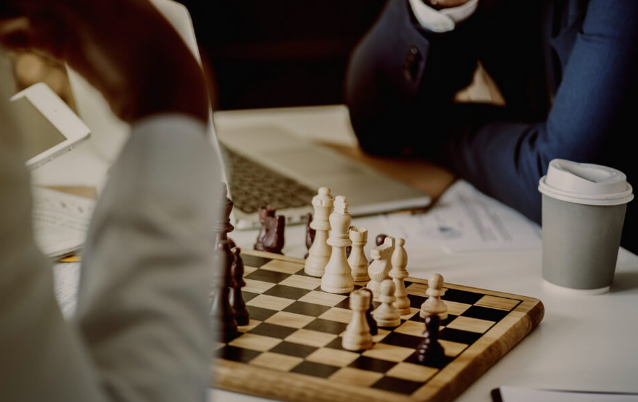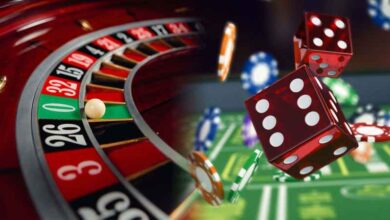Mastering the Chess Board Setup: A Beginner’s Guide to Your First Game

Setting up a chess board correctly is the first step to enjoying this classic game. The chess board setup involves placing all the pieces in the right positions, so you’re ready to start playing. If you’re new to chess, this guide will help you learn how to set up your chess board like a pro!
Understanding the chess board setup is essential for beginners. It can seem tricky at first, but with a little practice, you’ll feel confident in arranging the pieces. This guide will walk you through each step, ensuring you’re ready to challenge friends and family in no time!
What You Need for a Proper Chess Board Setup
To set up a chess board, you need a standard chess board and all the chess pieces. A chess board is square and has 64 squares arranged in an 8×8 grid. The pieces include:
- 16 pawns: 8 for each player
- 2 rooks: 1 for each corner
- 2 knights: Next to the rooks
- 2 bishops: Next to the knights
- 1 queen: She goes on her own color
- 1 king: He goes next to the queen
Having all your pieces ready is the first step. Make sure your board is facing the right way. The bottom-right square should always be a light square. This setup is important because it helps you remember where to place your pieces.
Understanding the Chess Board Layout: Ranks and Files
The chess board is divided into ranks and files. The ranks are the rows that run horizontally, numbered from 1 to 8. The files are the columns that run vertically, labeled from a to h. Knowing this layout will help you during the game.
Each player starts with their pieces on the two rows closest to them. The second rank is filled with pawns. The first rank is where the other pieces go. This setup is important for game play because it affects how each piece can move.
Step-by-Step Guide to Setting Up Your Chess Pieces
- Start with the Rooks: Place them in the corners of the board.
- Add the Knights: Put them next to the rooks.
- Place the Bishops: They go next to the knights.
- Put the Queen and King: The queen goes on her own color, and the king goes next to her.
- Fill the Pawns: Place all eight pawns on the second rank.
Following this order will help you set up your chess board quickly and correctly. Always double-check that your pieces are in the right places before starting the game.
Common Mistakes in Chess Board Setup and How to Avoid Them
When setting up a chess board, beginners often make mistakes. Here are some common ones:
- Wrong Piece Placement: Sometimes players place pieces in the wrong spots. Make sure the queen is on her color!
- Board Orientation: Ensure the board is oriented correctly. The bottom-right square should be light.
- Forgetting Pawns: Players might forget to place all their pawns. Remember, each player has eight!
Avoiding these mistakes will help you start every game on the right foot. Always check your setup before challenging someone to a match.
Getting to Know Your Chess Pieces Through Setup
Learning how to set up your chess board also helps you get to know your pieces better. Each piece has its own unique way of moving. Here’s a brief overview:
- Pawns: Move forward one square, but capture diagonally.
- Rooks: Move in straight lines, either horizontally or vertically.
- Knights: Move in an L-shape and can jump over other pieces.
- Bishops: Move diagonally across the board.
- Queens: Move in any direction for any number of squares.
- Kings: Move one square in any direction.
Understanding how these pieces move is essential for gameplay. The setup helps you visualize their positions on the board.
Fun Variations of Chess Board Setup for New Challenges
Once you’re comfortable with the standard chess board setup, you can try some fun variations. Here are a few ideas:
- Mini Chess: Use a smaller board with fewer pieces for a quick game.
- Chess960: Randomly shuffle the back row pieces to create a new setup.
- Team Chess: Play with friends and form teams for a fun group challenge.
These variations can keep the game exciting and help you practice your skills in different ways. Don’t be afraid to get creative!
Visual Guide: Chess Board Setup for Beginners
Visual aids can greatly enhance your understanding of chess board setup. It’s helpful to see the arrangement before you try it yourself. Here’s a simple description to visualize the setup:
- Imagine the chess board is a big square.
- The bottom row (first rank) has the rooks on the corners. Next to them are the knights, then the bishops. The queen is placed on her color, and the king is right next to her.
- The second row (second rank) is filled with all eight pawns.
You can also look for diagrams or videos online to see the setup in action. Many chess books also include pictures showing the correct arrangement. Visuals help beginners learn faster. You’ll remember the placement better when you can see it!
The Importance of Chess Board Setup in Game Strategy
The chess board setup isn’t just about placing pieces; it plays a vital role in your game strategy. A proper setup gives you a good starting position. Here’s why it matters:
- Control of the Center: Setting up your pieces to control the center of the board can give you a strong advantage. The center squares (d4, d5, e4, e5) are key areas for launching attacks and moving pieces.
- Piece Coordination: When your pieces are arranged correctly, they can support each other during the game. For example, having pawns in front of your bishops allows them to protect each other.
- Readiness for Attack: A well-organized setup prepares you to attack your opponent’s pieces quickly. If your pieces are in the right places, you can react faster to threats.
Understanding these strategic points will help you become a better player. Each game begins with the chess board setup, so take it seriously!
Quick Tips for a Flawless Chess Board Setup Every Time
Getting the chess board setup right every time is easier with some helpful tips. Here are some quick ideas to remember:
- Practice Regularly: The more you set up the board, the easier it becomes. Try practicing on your own.
- Use a Checklist: Make a list of where each piece goes. This can help you double-check your setup.
- Take Your Time: Don’t rush. It’s better to take a few extra minutes to ensure everything is in the correct position.
- Play with Others: Setting up the board with friends can make learning fun. They might have their own tips to share!
By using these tips, you’ll improve your chess board setup skills quickly. The more comfortable you feel, the more you can focus on your strategy during the game.
Conclusion
In learning how to set up a chess board is an important step for every beginner. A good setup helps you understand the game better and prepares you for fun matches with friends and family. Remember, practice makes perfect! The more you set up the board, the easier it will become.
Chess is a game of strategy, and it all starts with the right arrangement of pieces. So, take your time, follow the tips in this guide, and enjoy your journey into the exciting world of chess. Whether you’re playing for fun or trying to win, a proper chess board setup will help you get started on the right foot!
Frequently Asked Questions (FAQs)
Q: How do I set up a chess board?
A: Place the board so that each player has a white square in the bottom right corner. Set up the rooks, knights, bishops, queen, king, and pawns in the correct order.
Q: What pieces go in the back row?
A: The back row has the rooks on the corners, knights next to them, then bishops, the queen on her color, and the king next to the queen.
Q: Can I play chess alone?
A: Yes! You can practice against a computer or solve chess puzzles to improve your skills.
Q: What is the goal of chess?
A: The goal is to checkmate your opponent’s king, which means they cannot make any safe moves.
Q: How long does it take to learn chess?
A: Learning the basics can take a few hours, but mastering the game takes time and practice. Enjoy the learning process!




